As the cradle of Aotearoa’s tourism industry, manaakitanga courses as deep in Rotorua’s DNA as its geothermal verve.
Welcoming and guiding visitors from all over the world since the 1880s, Rotorua remains one of the world’s most enthralling geothermal regions. As the cradle of Aotearoa’s tourism industry, manaakitanga courses as deep in Rotorua’s DNA as its geothermal verve. Surrender to nature’s ferocious awe, where mud pools bubble and boil, hissing geysers gush, and steam coils like phantoms from the earth’s fissures across Rotorua’s remarkable landscape. In a city laden with so many geothermal wonders, choosing what attractions to plump for can be a tough call.
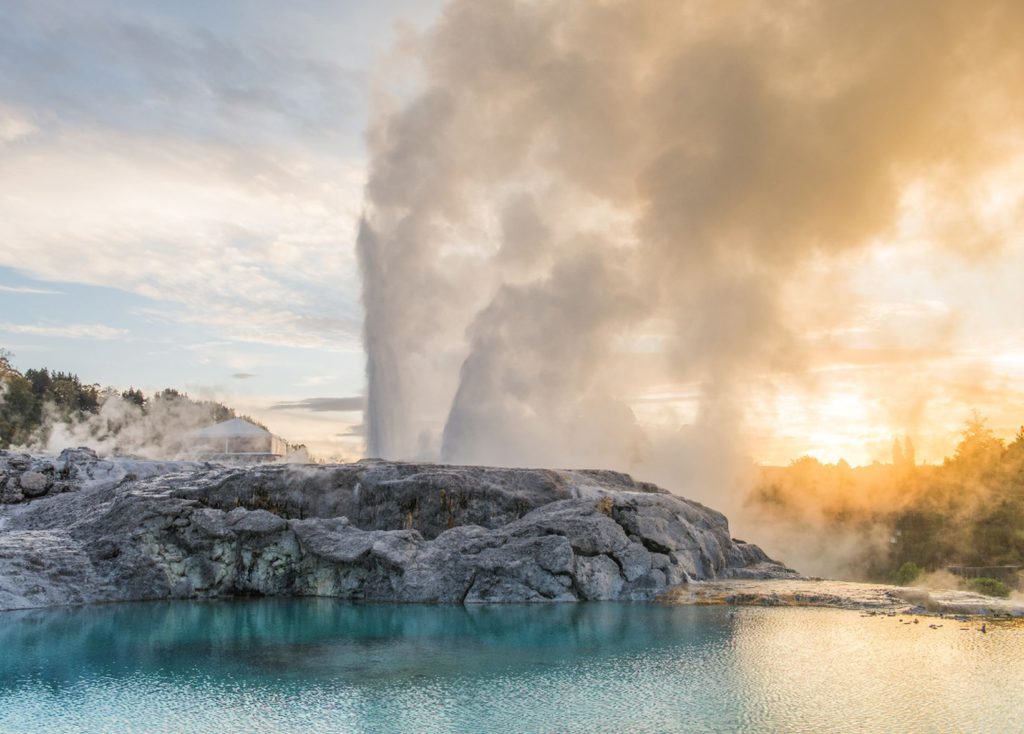
Leading my hit parade, I adore Te Puia in the historic Te Whakarewarewa Valley, home to the feisty Pōhutu geyser, the Southern Hemisphere’s largest, which relentlessly flips her lid every hour, spewing boiling water high into the air. If you’ve done Te Puia by day, definitely check out one of Rotorua’s newer visitor offerings, Geyser by Night – Te Puia Light Trails. Spanning 70 hectares in Te Whakarewarewa Geothermal Valley, Te Puia Thermal Reserve is artfully illuminated for the night-time tour. The spell-binding sense of atmospheric splendour is seriously next-level.
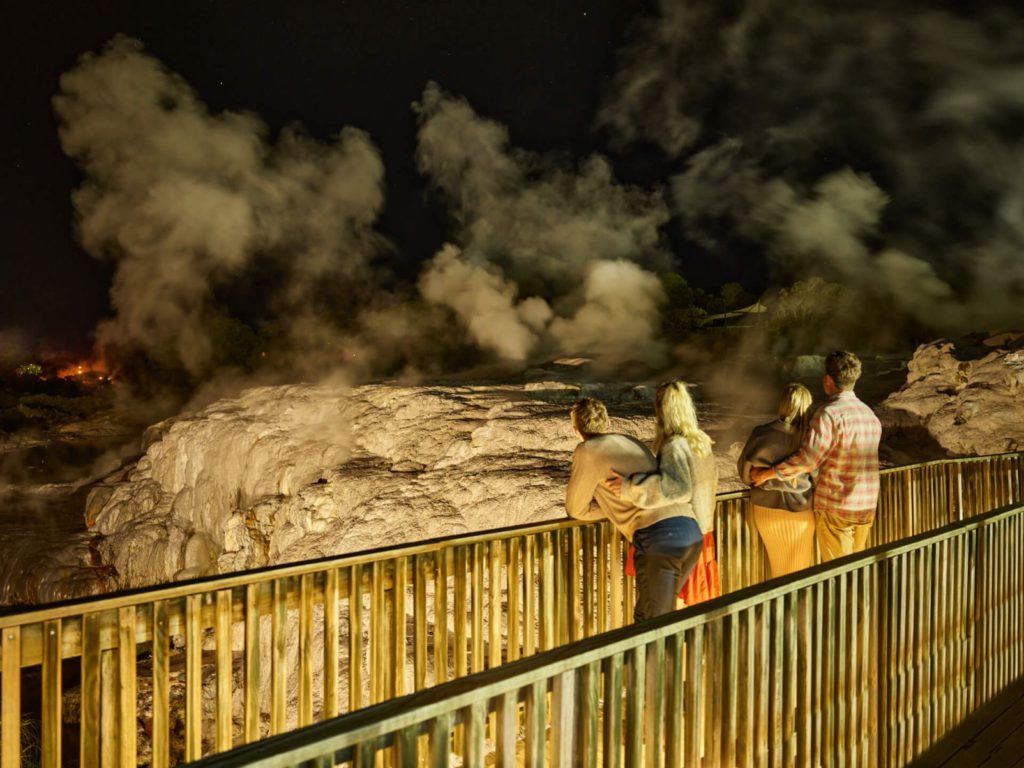
It’s the wondrous climax to the night tour which is charismatically led by a couple of convivial Te Arawa guides, who led my group and I on a leisurely 90 minute nocturnal stroll through the thermal valley, intimately sharing historic anecdotes, tribal mythology and showcasing the valley’s remarkable features. We admired a warm lake where many centuries of warriors have bathed after battle, the sulphur cleansing their wounds. No wonder this area and its prized healing waters and constant supply of hot water was fought over so ferociously.
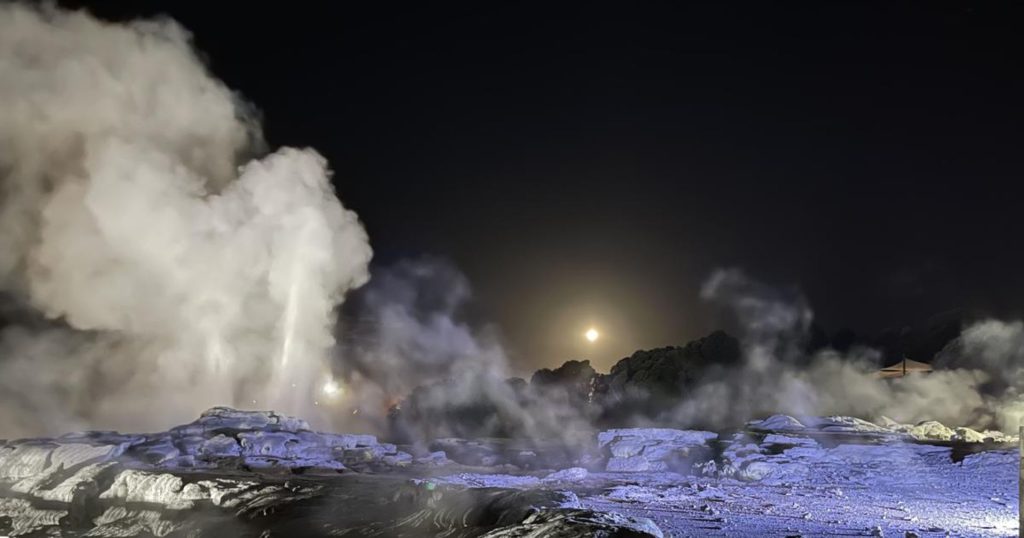
Local Māori have been living here for nearly 700 years, with the guides linking directing to Rotorua’s earliest hosts. At a cooking pool, our guide drew a kete from the water and we indulged in a Māori version of steamed pudding, slathered with warm custard. It was magnificent. We passed by Te Puia’s Kiwi Conservation Centre before marvelling over the site of the Waikite geyser, once the crown-jewel of the geothermal valley – with water jets shooting as high as 100 metres, before going dormant in 1969. There’s hope she may reawaken again in coming decades. It’s vast silica terrace looks wonderfully other-worldly under the night lights. We also passed by Papakura Geyser, which has shown growing signs of life after a very long hiatus. The closure of many private bores in the wider Rotorua area has undoubtedly helped restimulate geyser activity in Whakarewarewa, although they are very mercurial forces of nature. As we enjoyed a delicious hot chocolate, mighty Pōhutu started erupting 30 metres high.
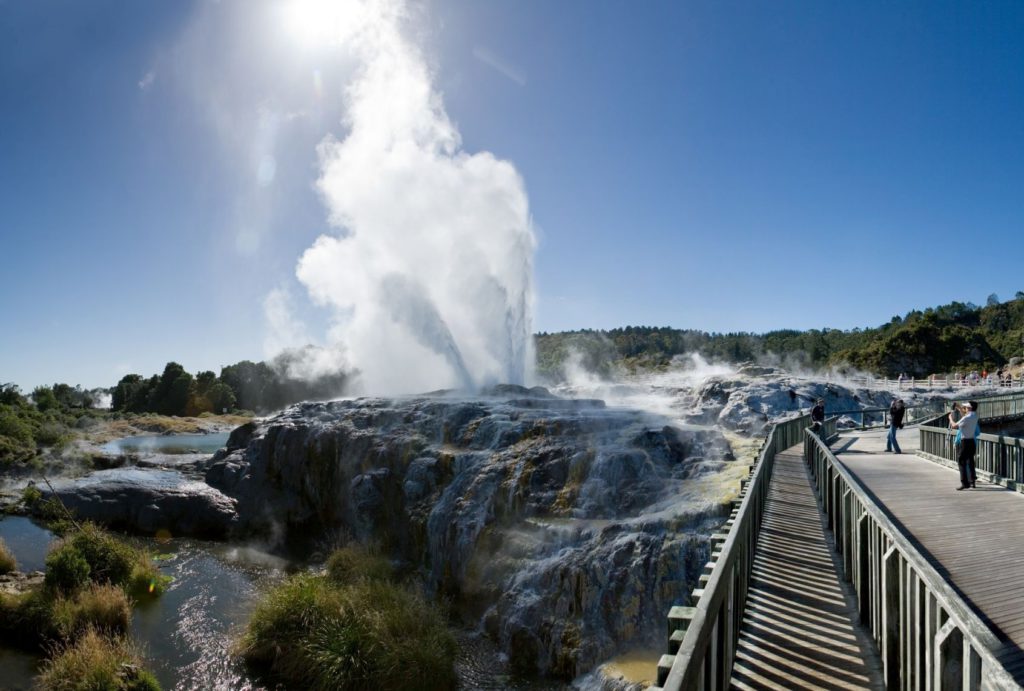
The tell-tale sign is two other geysers, Kererū and Te Tohu starting playing first. We soaked up the power and glory of the geothermal opera. The korowai of natural darkness and the evening calm heightened my senses, accentuating the sensory wonder at Te Puia. As we made our way back along those magnificent elevated boardwalks and bush pathways by torchlight, our tour wound up by Te Puia’s two intricately carved meeting houses that form part of the Rotowhio Marae. As we gazed at these flood-lit carved glories and our guides shared their insights – suddenly everything went pitch black. Spooky. Perhaps the spirits were playing with us – or the guides, although they both looked a little bemused, too! After marvelling over the magnificent 12 tall pou, that represent celestial guardians, it was time to say Haere rā, after such a radiantly engaging encounter.
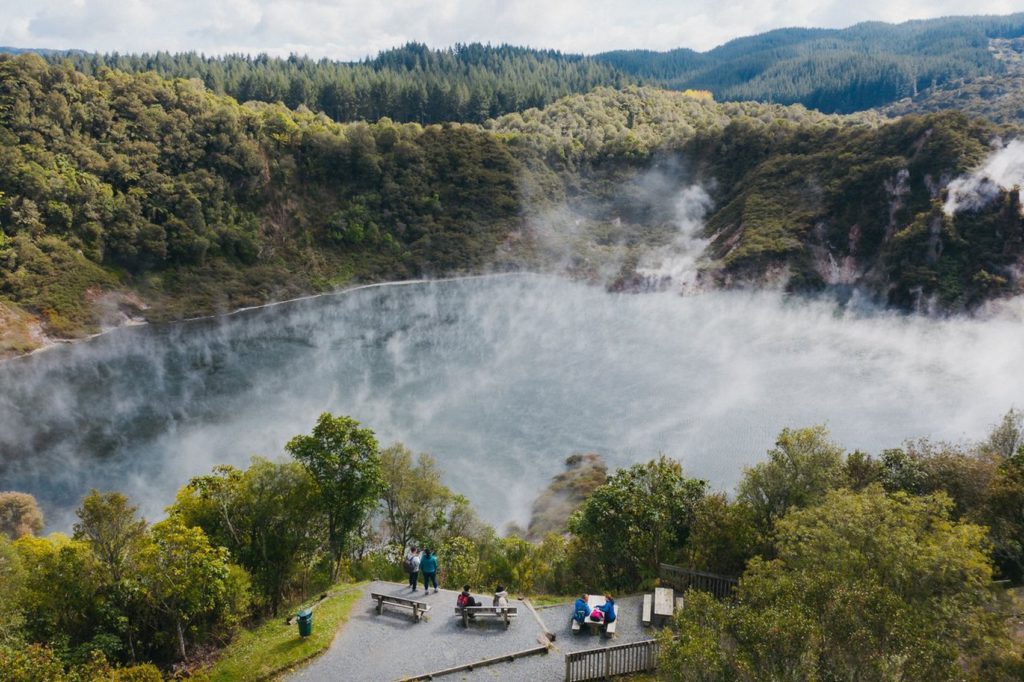
I also hold deep reverence for the Waimangu Volcanic Valley, an immensely rewarding choice that strikingly illustrates the unwavering and tempestuous power of nature. Waimangu’s major point of difference is the fact that it’s a hot and steamy adolescent, the youngest volcanic valley in the world – created as a direct result of the last catastrophic eruption in 1886. As you depart from the visitors centre to discover the valley, take in the panorama of the valley and Tarawera mountain. Prior to its last eruption in 1886, the area you gaze out upon was just rolling scrub country, with no surface hydrothermal activity.
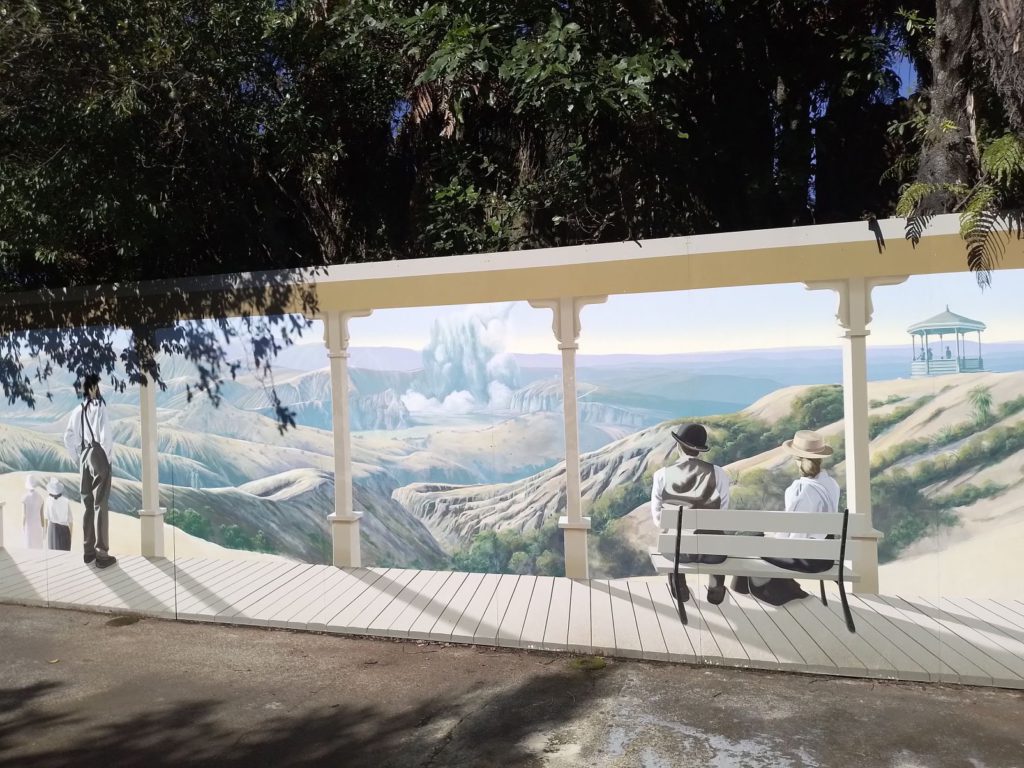
The 1886 eruption ripped open a line of craters, obliterating all plant, animal and bird life across the area before you. So, all the vegetation that now covers this valley, is remarkably youthful. As Mt. Tarawera split in two and exploded Lake Rotomahana to 20 times its previous size, it also opened the earth along a 17km-long rift. The seven craters that you see today in Waimangu Valley today were violently created in the process, making the reserve the world’s youngest geothermal eco-system.
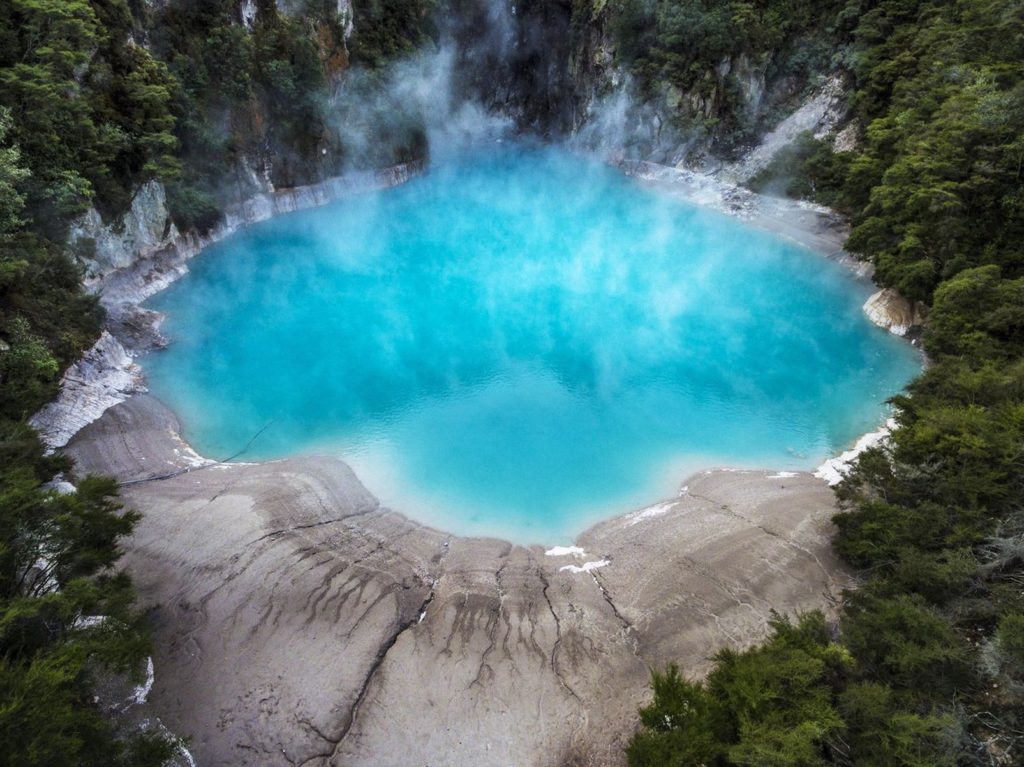
Waimangu is home to a host of geothermal formations including Frying Pan Lake (the largest hot spring in the world), Cathedral Rocks and multi-coloured silica platforms like Marble Terrace and Warbrick Terrace. But the most spell-binding sight is the topaz-blue hue of Inferno Crater, a wide open window on the Earth’s molten core. Fall in this crater lake and you’d be dead in about 6 seconds. You could easily spend all day exploring its grippingly active and dramatic features.
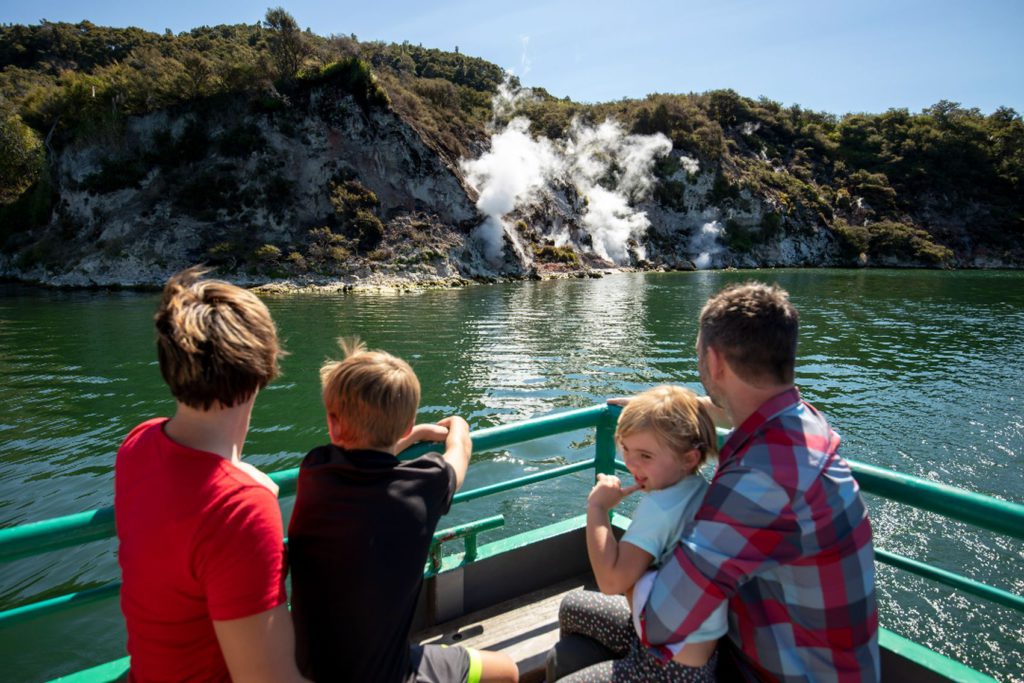
The 45 minute guided boat ride on Lake Rotomahana is a cracking encounter with the location of the destroyed pink and white terraces. It’s quite the novelty to be cruising over the exact site of the Pink and White Terraces. A decade ago, small remnants of both terraces were discovered, 60 metres below the water surface. You also can’t beat a good fumerole and Fumerole Bay’s intense steam vents, billowing like factory chimneys is a show-stealer.www.waimangu.co.nz
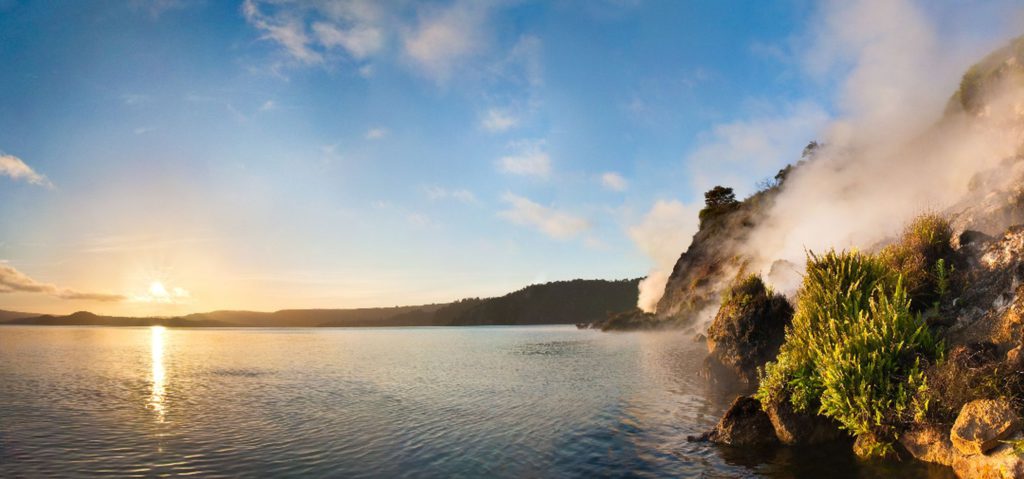
Need some personal pamper time? Overlooking the sublime Whakarewarewa Forest, Secret Spot Hot Tubs is a hidden oasis of tranquillity. Established just a few months before Covid-19 changed our world, the plucky business has not just survived the pandemic but thrived in its midst. Founded by Keith and Eric Kolver, the brothers conceived the idea for this enterprise while canoeing the Whakatane River in a storm. They dreamt of a hot tub in the forest with steaming mulled wine. As you do. Inspired by their many outdoor adventures, they decided to create their own secret spot that they could share with others.
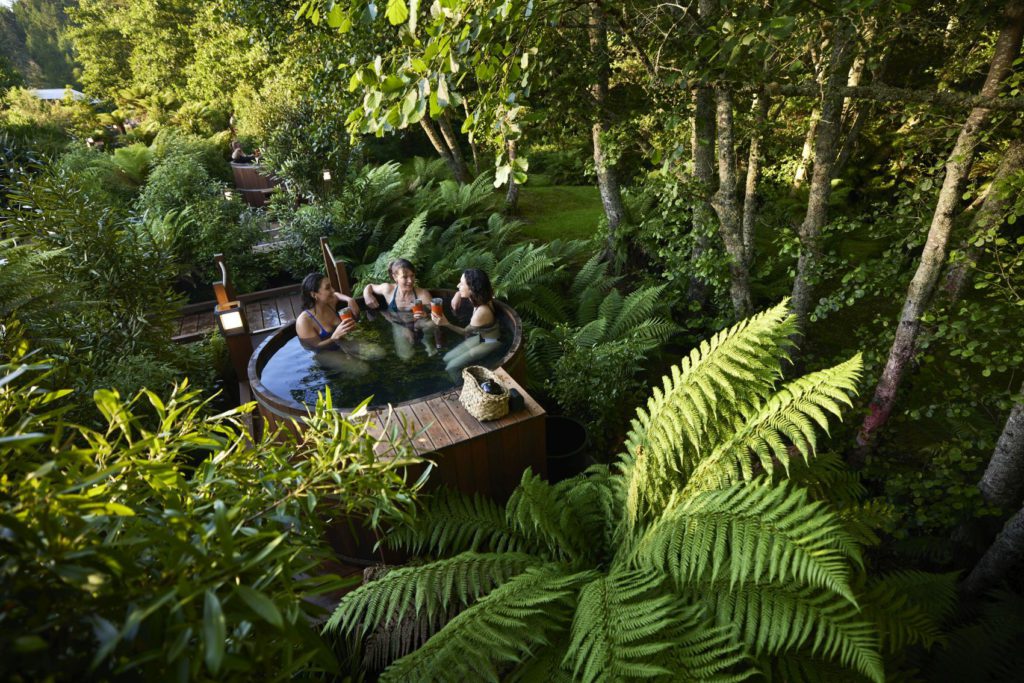
Their luxury cedar hot tub experience in fresh forest spring water is studded with quintessential Kiwi accoutrements to ramp up the pamper-factor. The hand-crafted cedar tubs are wrapped in native planting, boulders and streams, with a lush lawn leading you down to the banks of the Puarenga stream. It’s a dream-worthy setting. At the push of a button, enjoy a Good George craft beer or cider, kick back with a wine, Manuka Brothers’ coffee or premium soda.
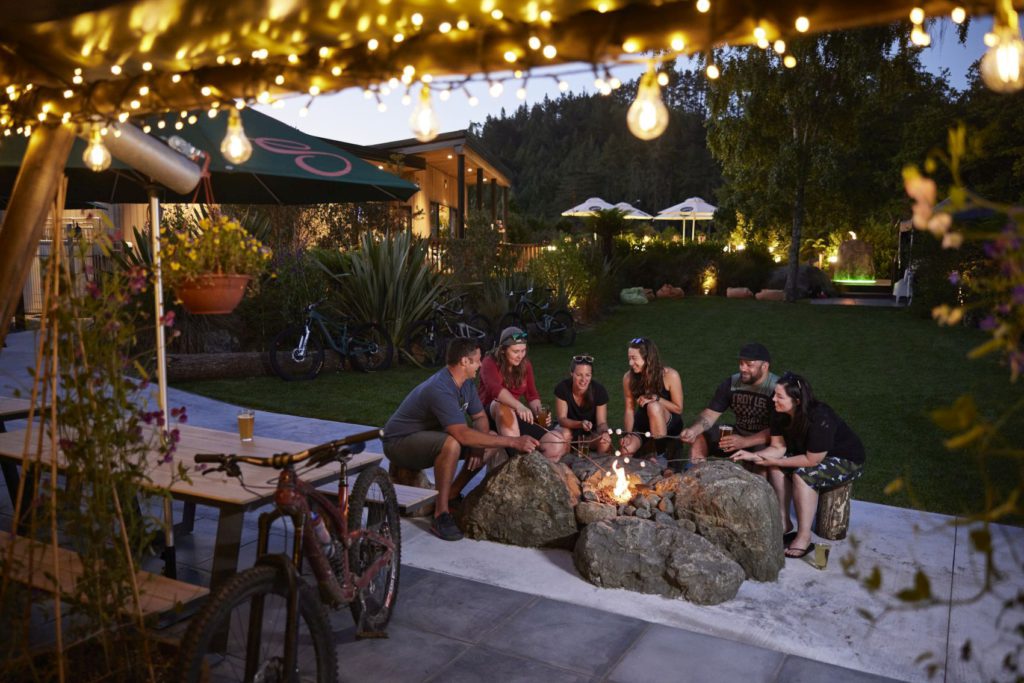
There’s tasty bites available from the cabinets, a waterfall off the roof, and even a BaseCamp safari tent complete with a fire pit, in this magical, twinkling wonderland. Another enticing offer is Secret Spot’s Shinny Dip deal. Your feet can enjoy a free soak with any beverage purchase! Secret Spot Hot Tubs is a wonderful, inventive addition to Rotorua’s sensory stable of treats. It’s forest bathing at its finest. https://secretspot.nz
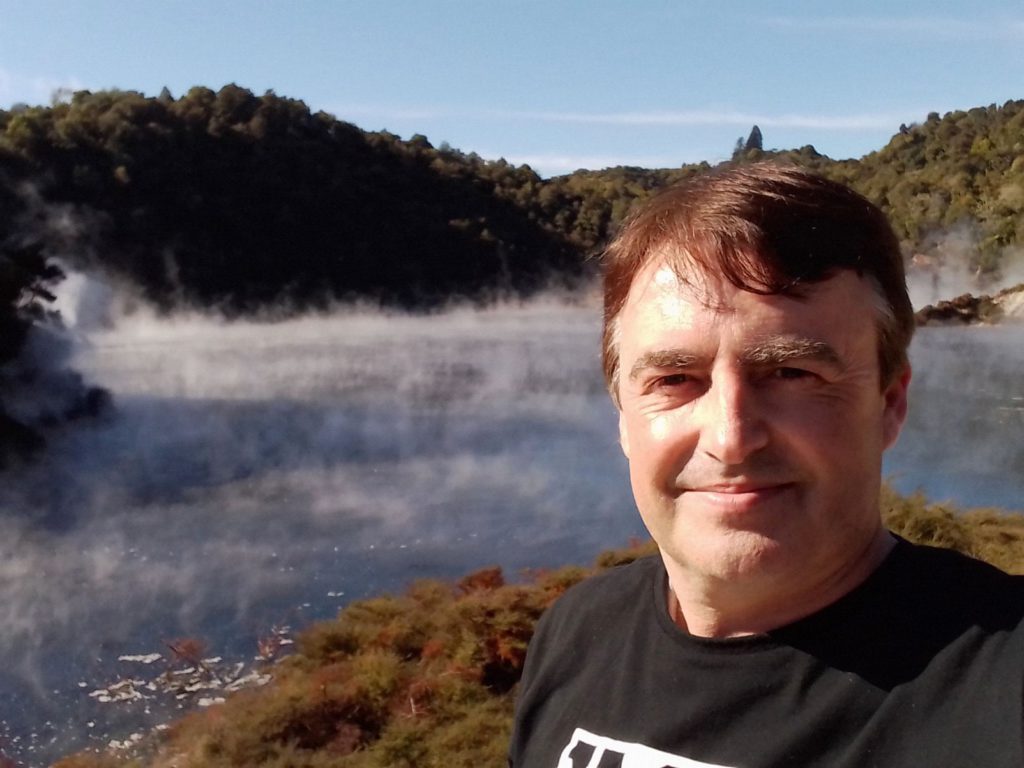
If you’re partial to a room with a lakefront view, you can’t get much closer to the lake than at Sudima Lake Rotorua, perched right on the shore, with ethereal morning mist faithfully rising from the lake, as I took a wake-up walk. This well-appointed home-away-from-home has all the facilities and features you’d expect from a Qualmark 4-star hotel, including a heated pool and kid zone, plus a great buffet breakfast.
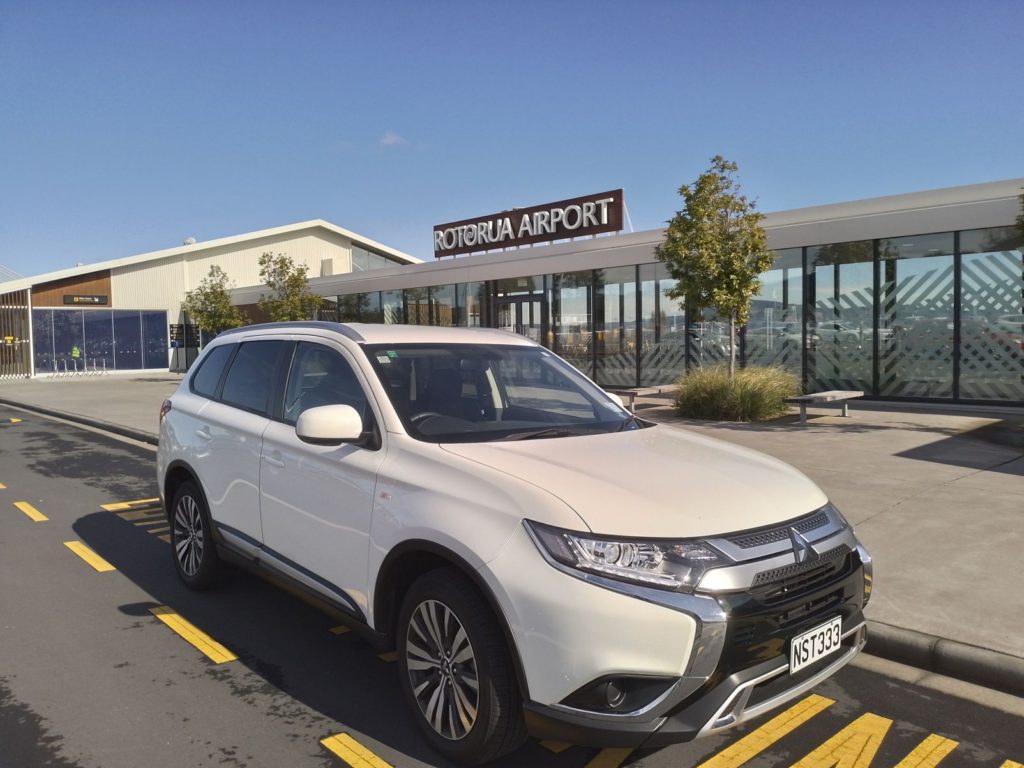
I romped my way around the manifold delights of Rotorua in a trusty Mitsubishi Outlander, courtesy of Ezi Car Rental. If you’re travelling with the tribe, upgrade to a SUV and score their spring deal on SUVs, from just $76 a day. Kiwi owned and operated, I thoroughly enjoyed the Ezi experience, where excellent cars, stringent cleaning practices, super sharp prices, and fast & friendly service are all part of the package. Ezi Car Rental operates an extensive network from 25 locations across the country. They’re everywhere you want to be. Head to www.ezicarrental.co.nz
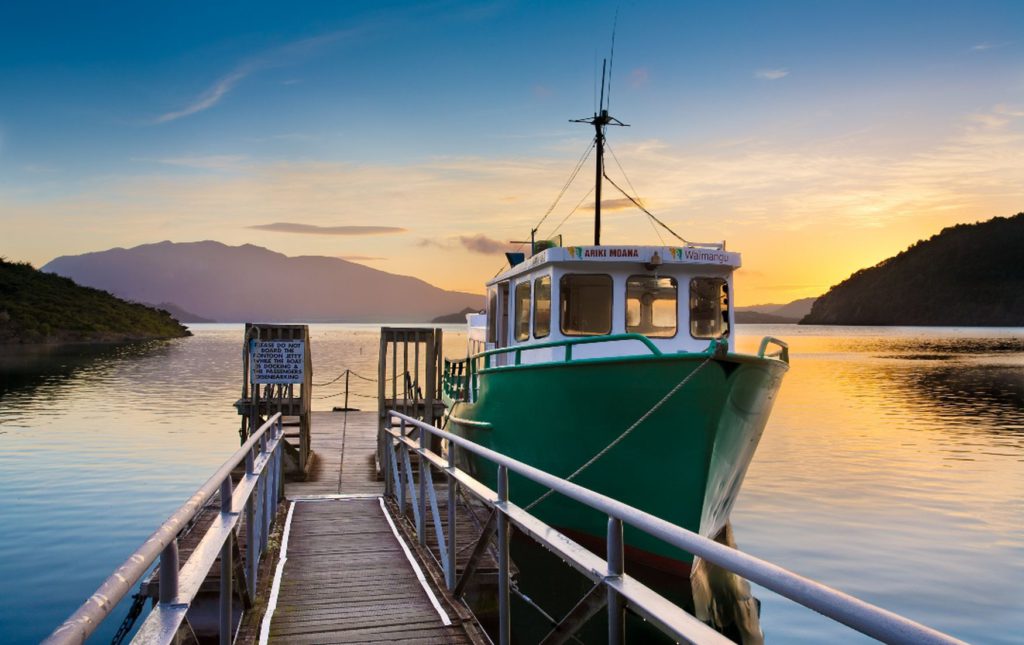
From geothermal wonders, hot pools and Māori culture to world-beating mountain biking, historic draws and lakeside dining, Rotorua is power-packed for adventure-seekers. For more trip inspiration and constantly updated destination insights, jump to www.rotoruanz.com



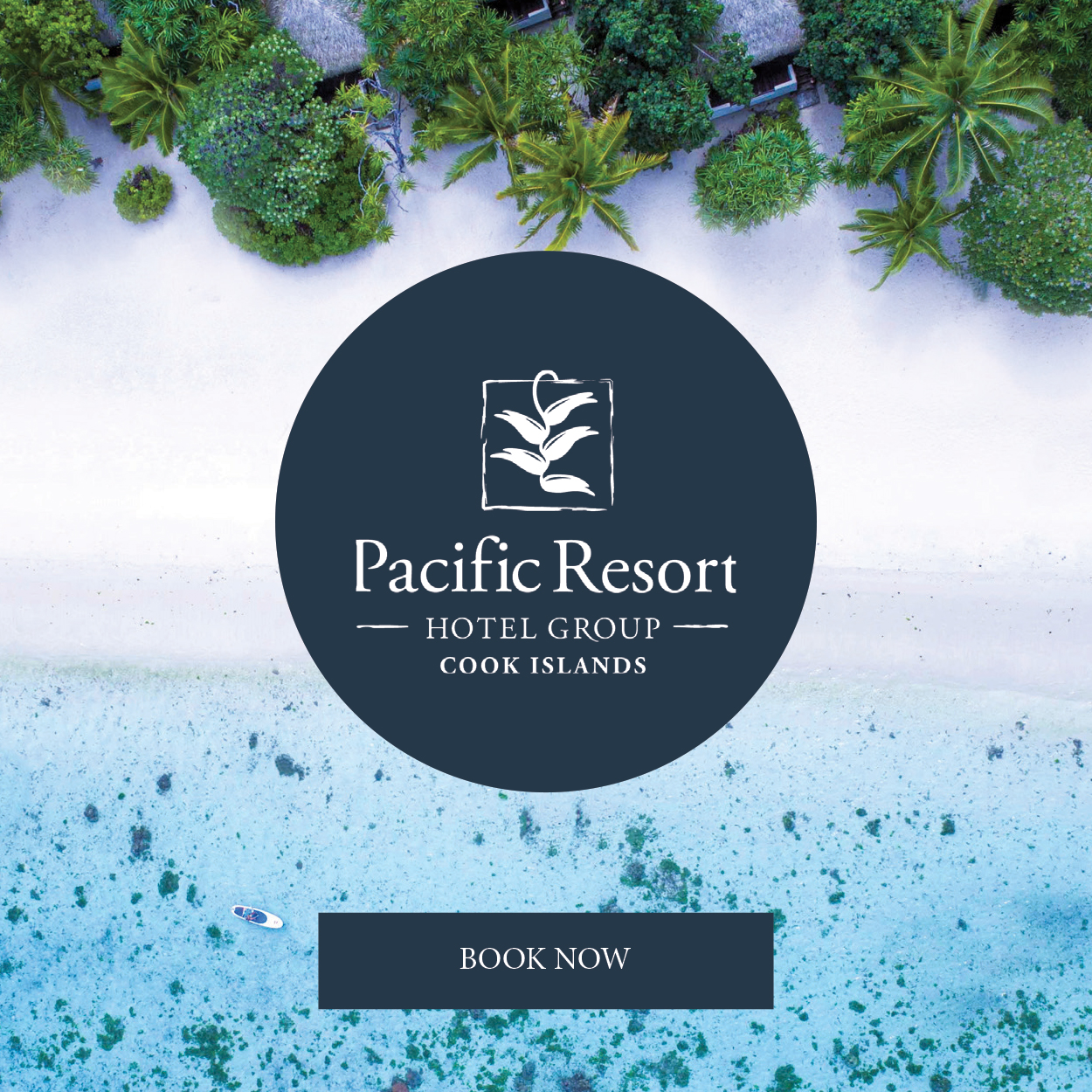
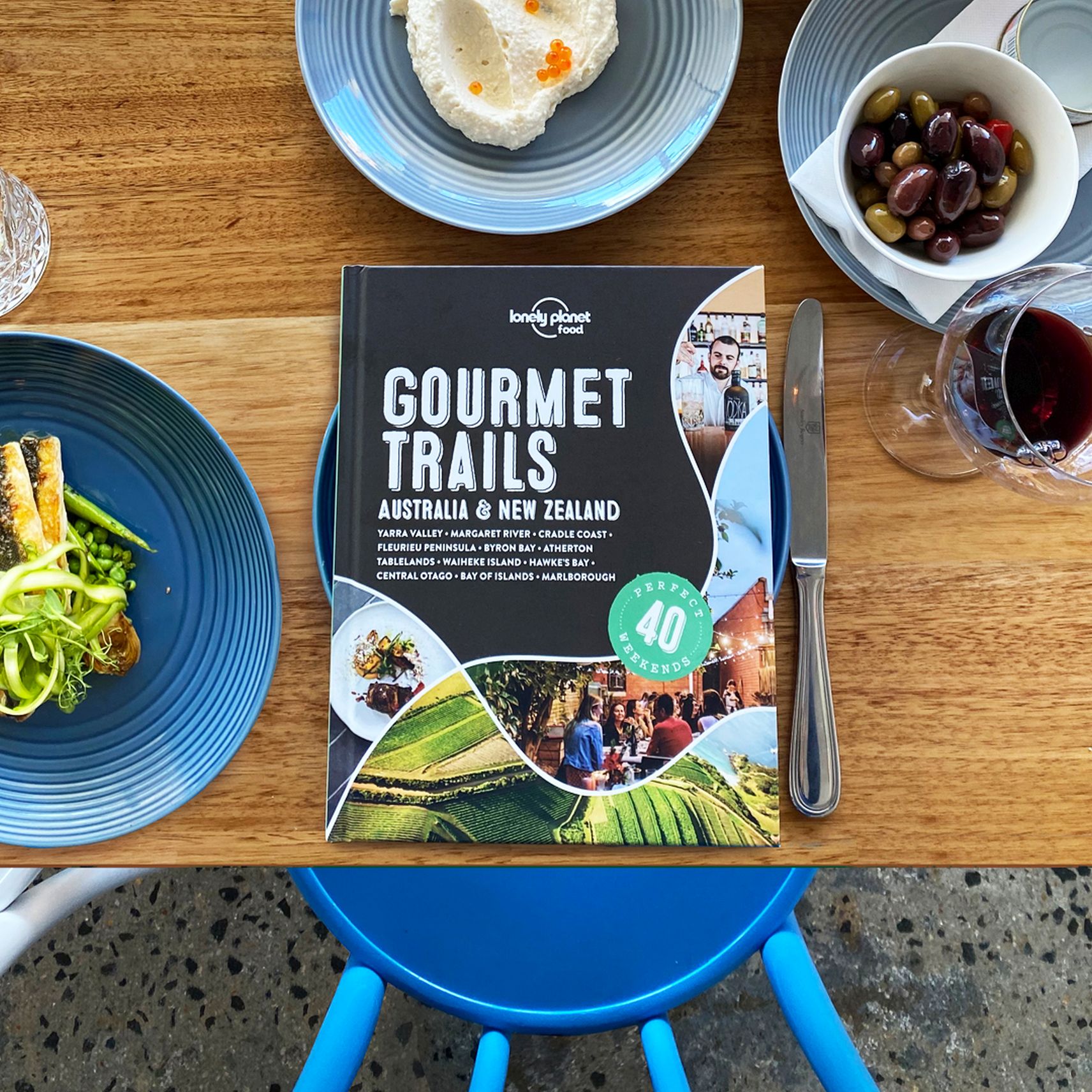
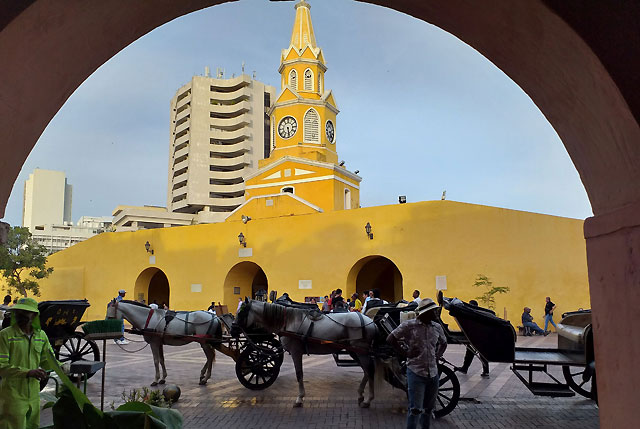
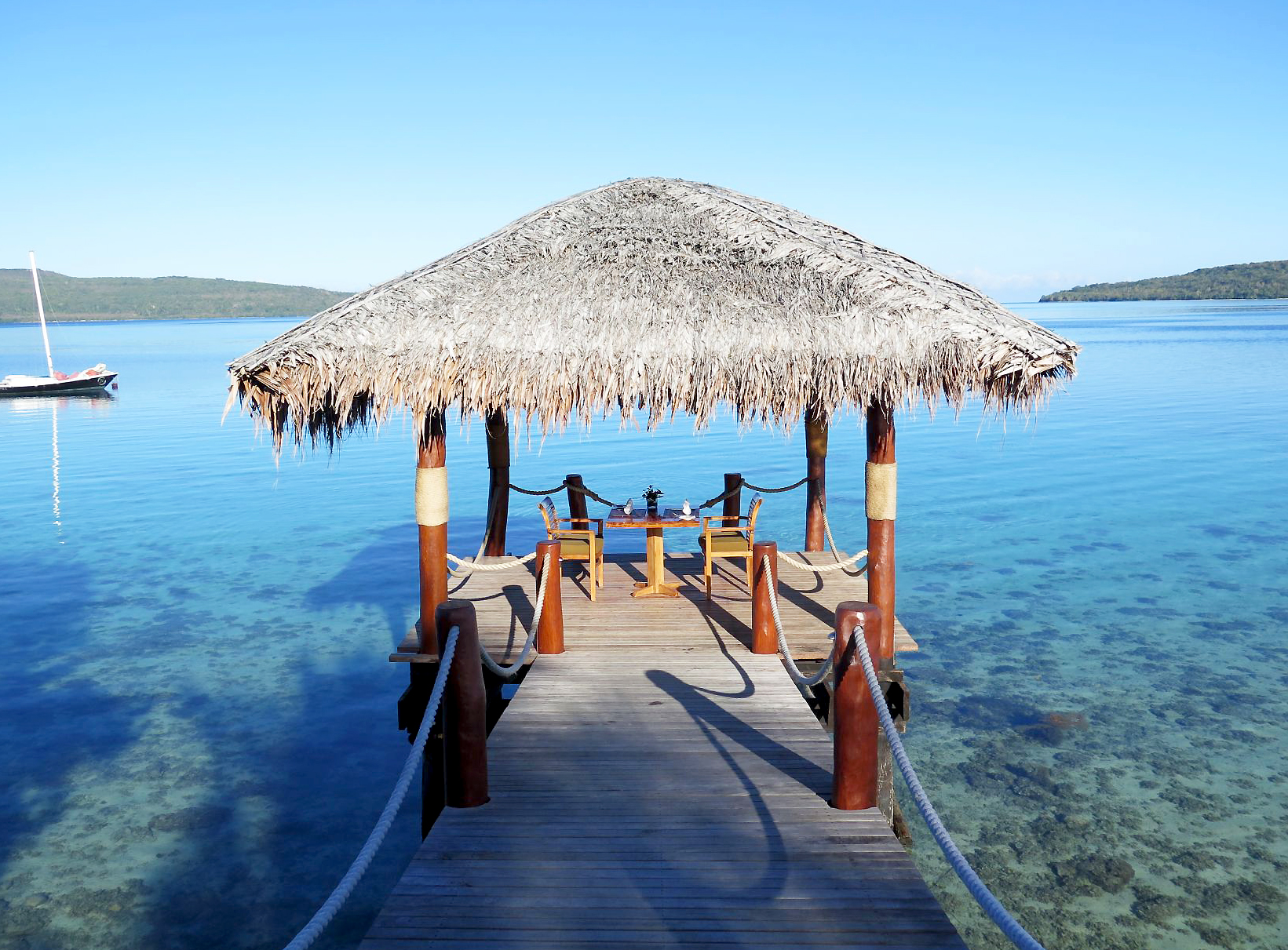
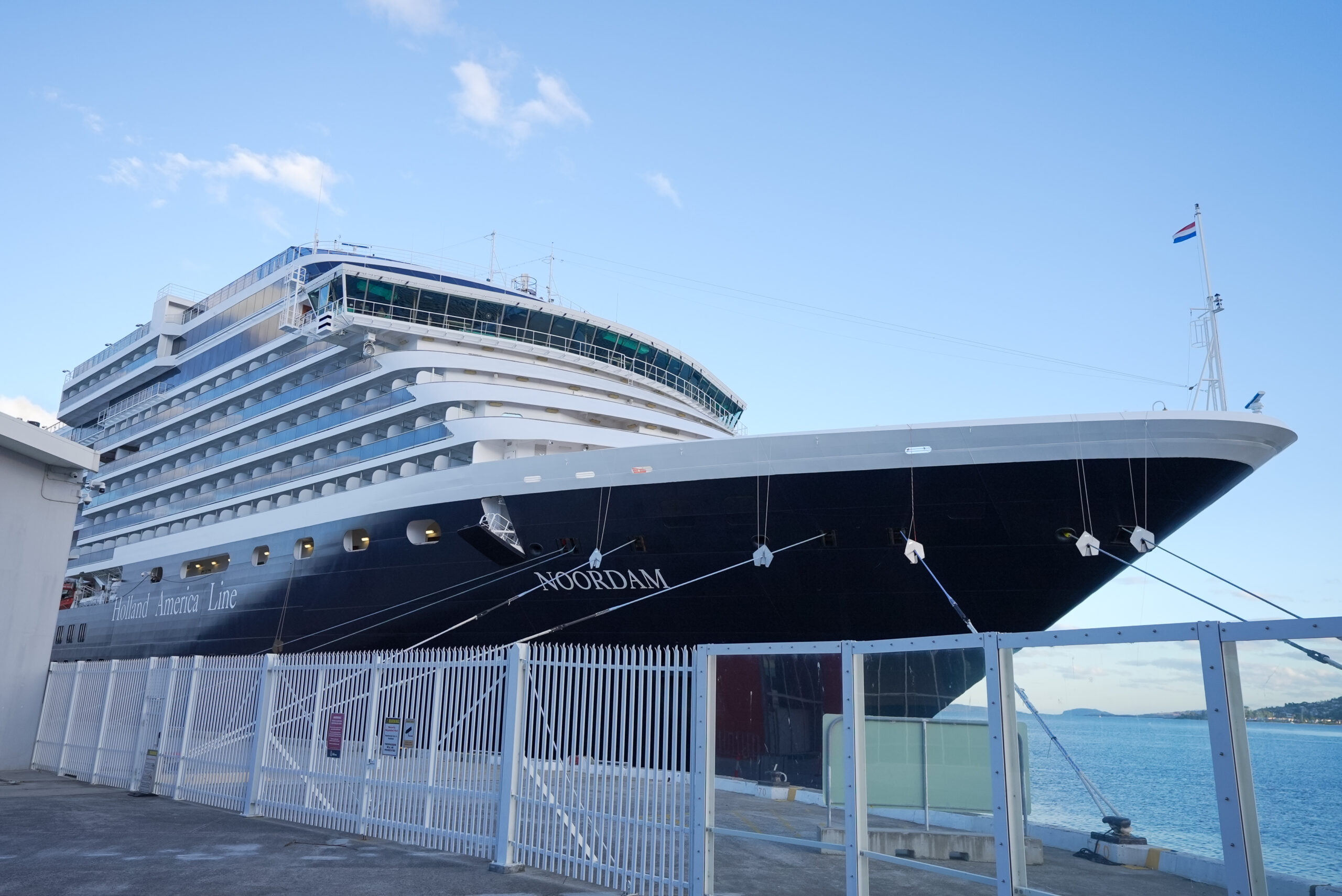

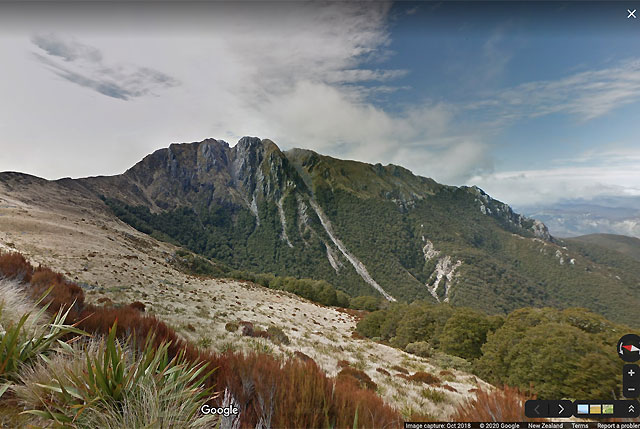
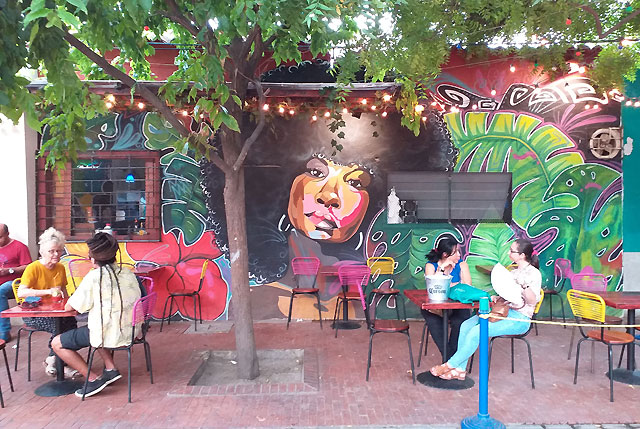
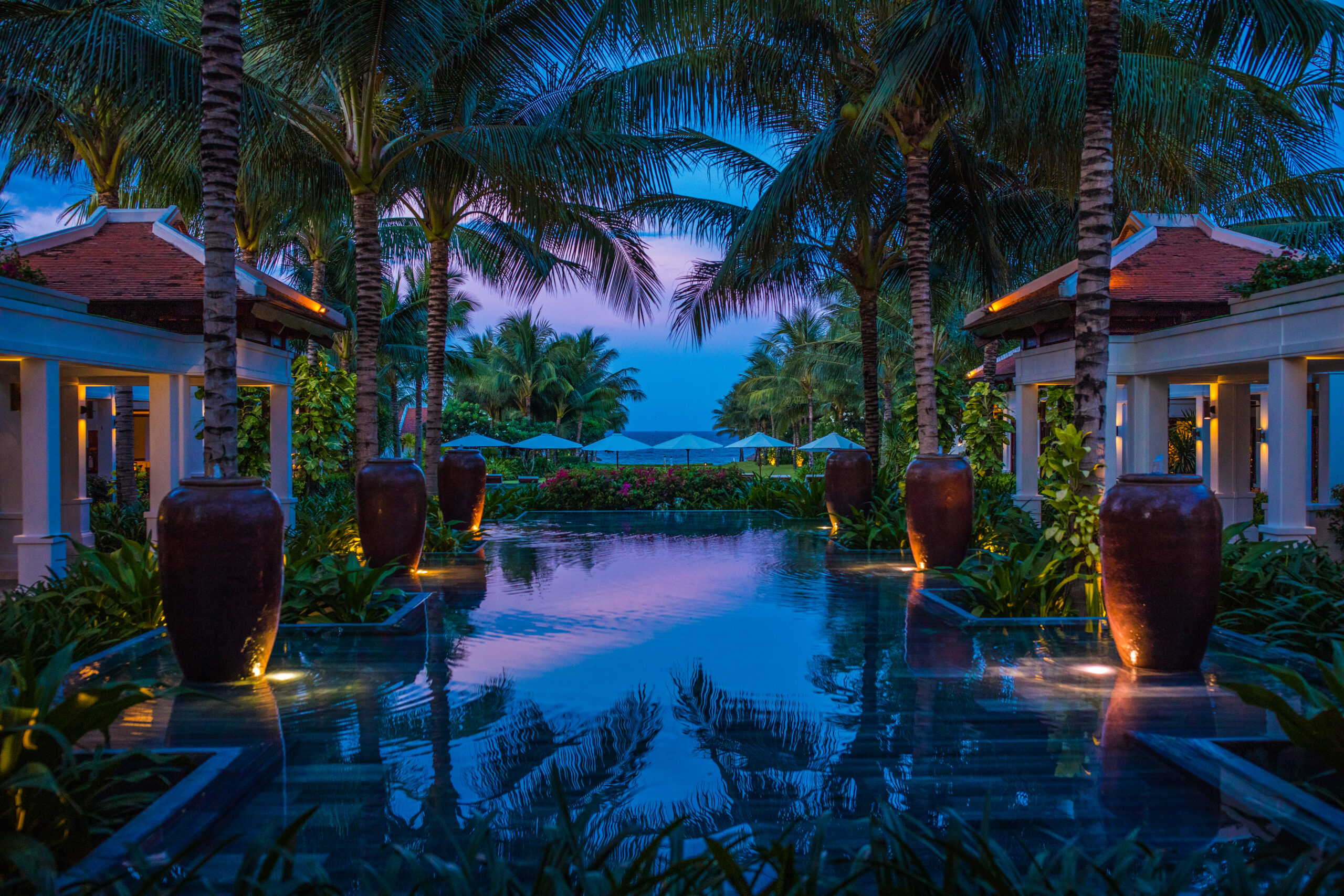
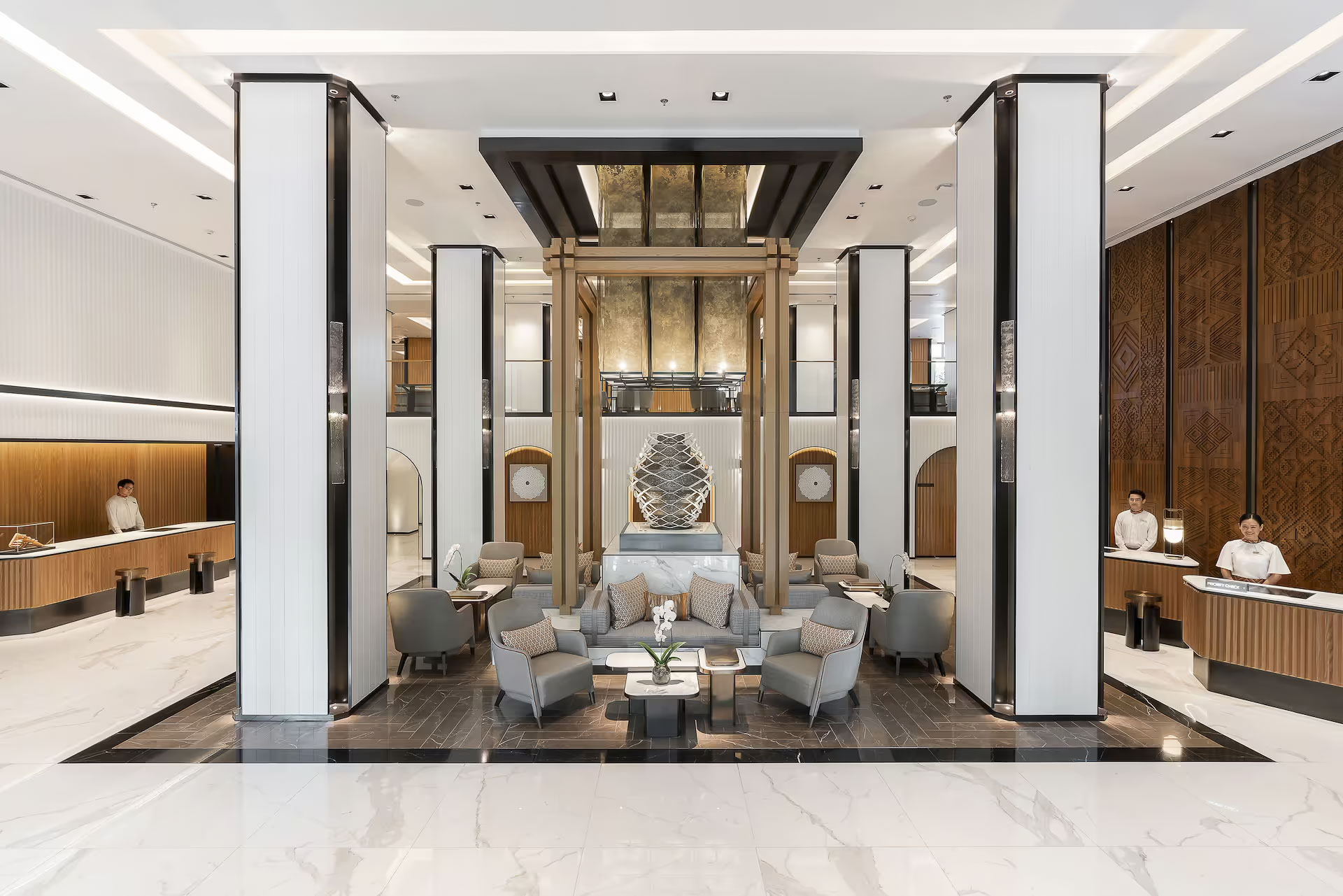
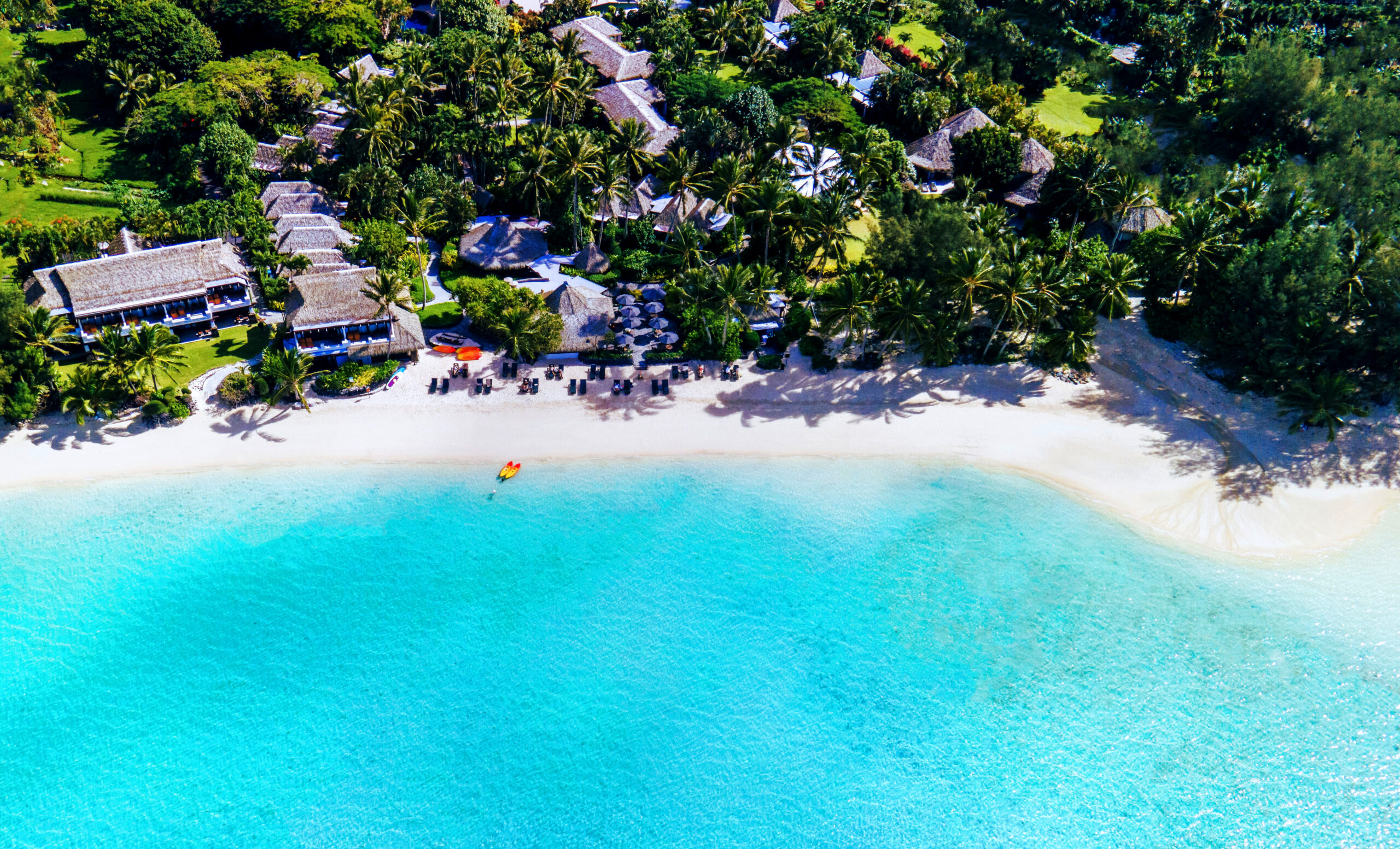
Recent Comments